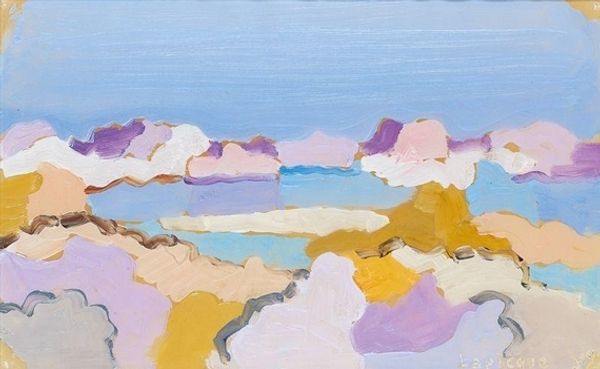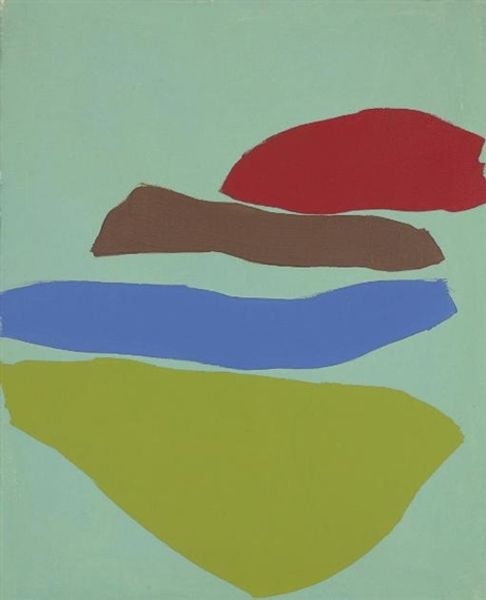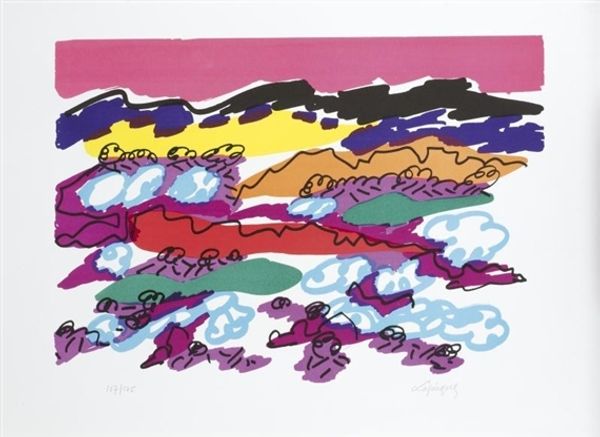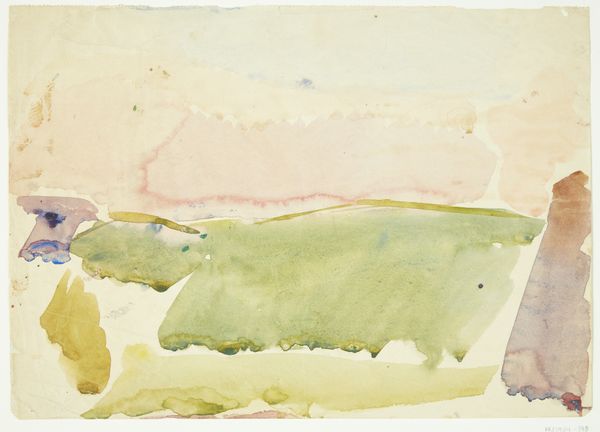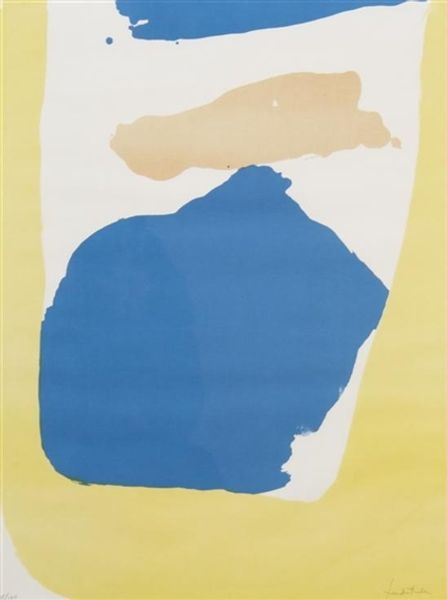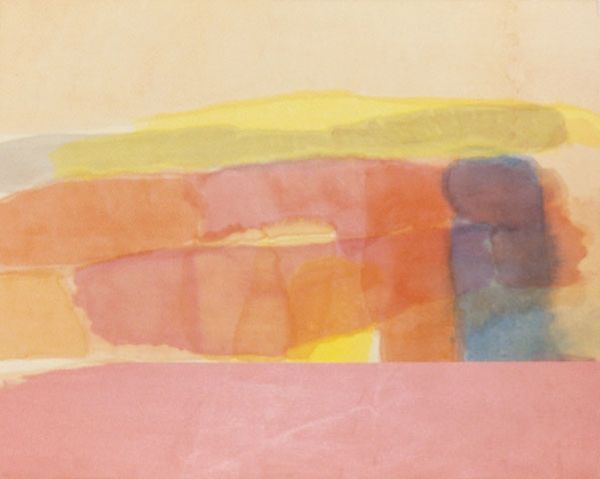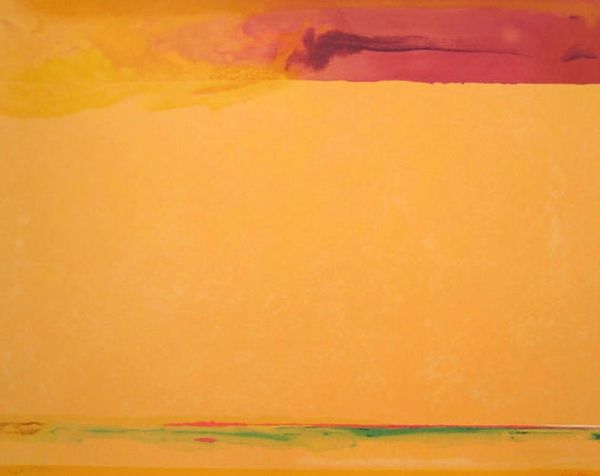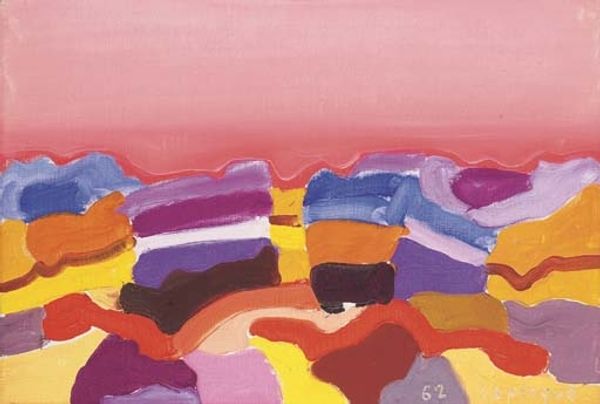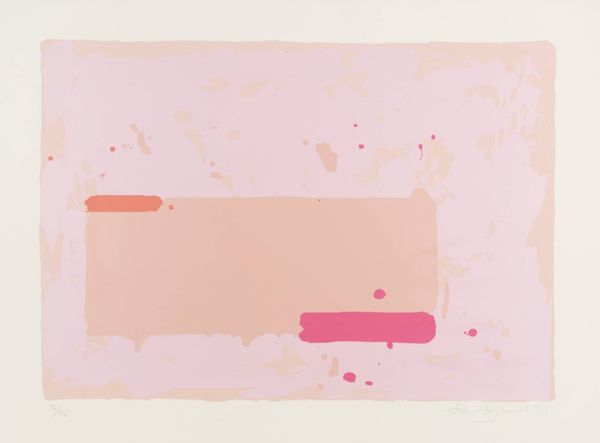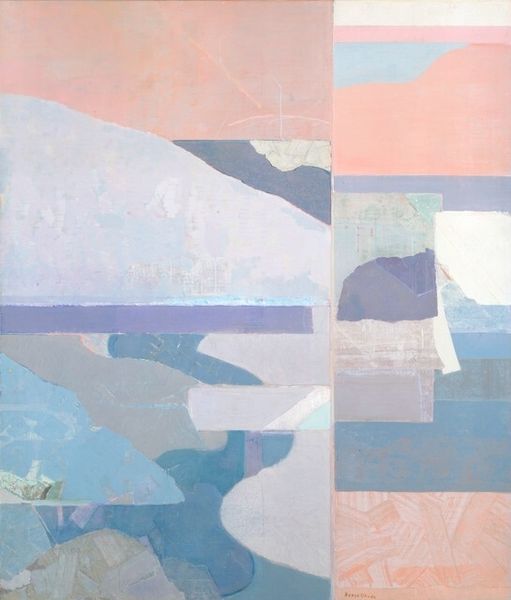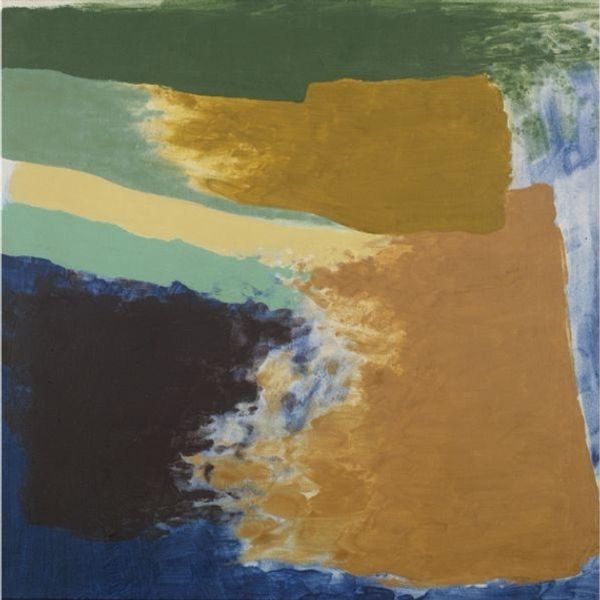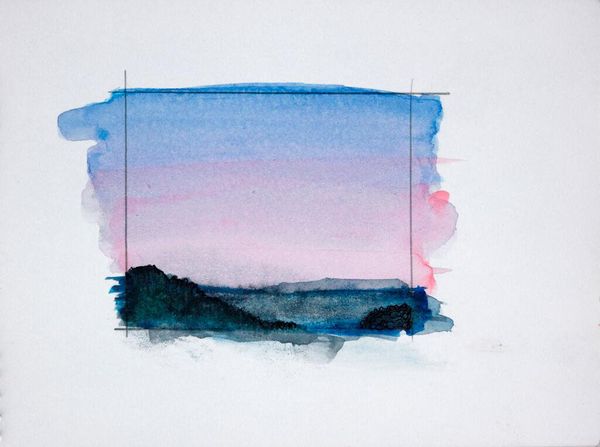
Copyright: Charles Lapicque,Fair Use
Editor: This is "Lagune bretonne," painted by Charles Lapicque in 1959. It appears to be oil paint on, well, something. It has a calming feel to it, almost like a faded memory of a seascape. The colors are very muted. What are your thoughts on it? Curator: My immediate interest is in the 'Lagune' itself - what material practices enable this representation? Look at how the flat planes of color are layered; the way each colour shape meets, without blending to evoke a landscape, brings the flatness of the canvas to attention. Are we to think of this flatness in relation to the industry of image reproduction prevalent in modernism? How does the medium used - oil on probably canvas or paper - impact our perception of the work compared to, say, the mass produced images prevalent? Editor: I see what you mean about the flatness now, how the artist doesn’t try to create an illusion of depth in a traditional way. What kind of production process would give rise to that conscious choice? Curator: Lapicque had a science background, didn't he? So maybe we consider not only artistic labour here, but also this artist's knowledge production of understanding our perceptions of color and space that is influenced by science and the social status given to technology at this time? How might Lapicque's artistic peers affect and influence this landscape style? Editor: So it’s a commentary on artistic method as much as it is a depiction of place. I hadn’t thought of it that way. Curator: Exactly! By examining the materials and their application, we unveil deeper insights into the socio-economic conditions shaping both art and its reception. Editor: This really changes how I see it. Thanks for pointing out the connection between the materials, the process, and the bigger cultural picture.
Comments
No comments
Be the first to comment and join the conversation on the ultimate creative platform.
